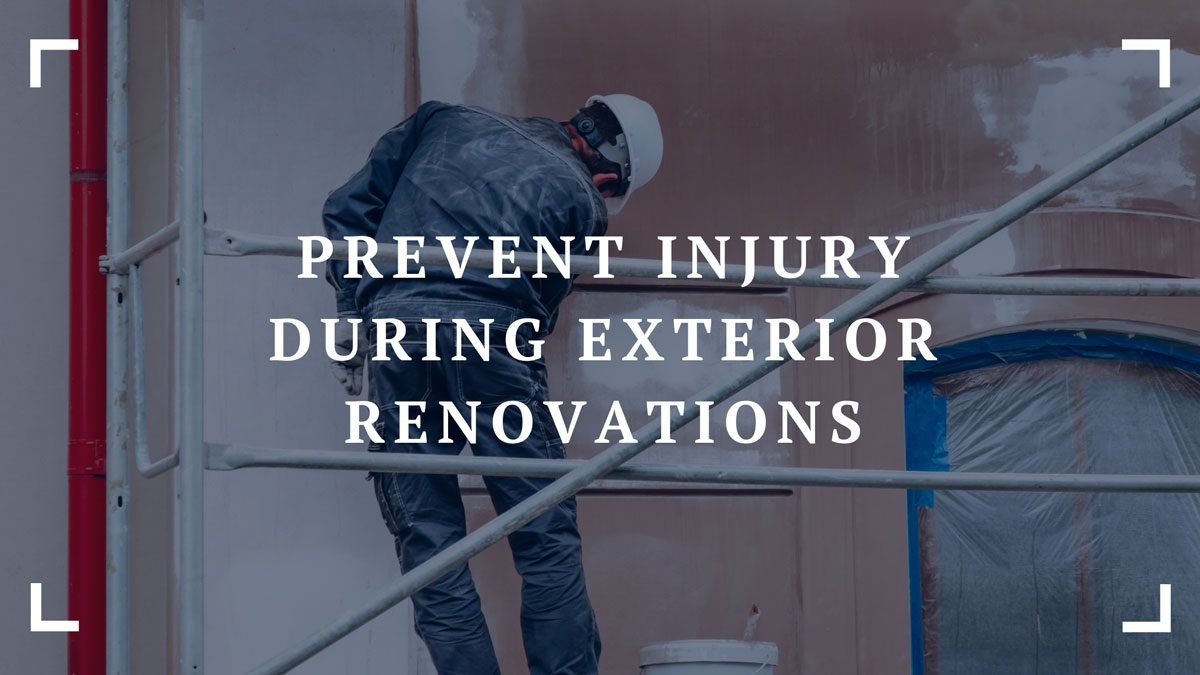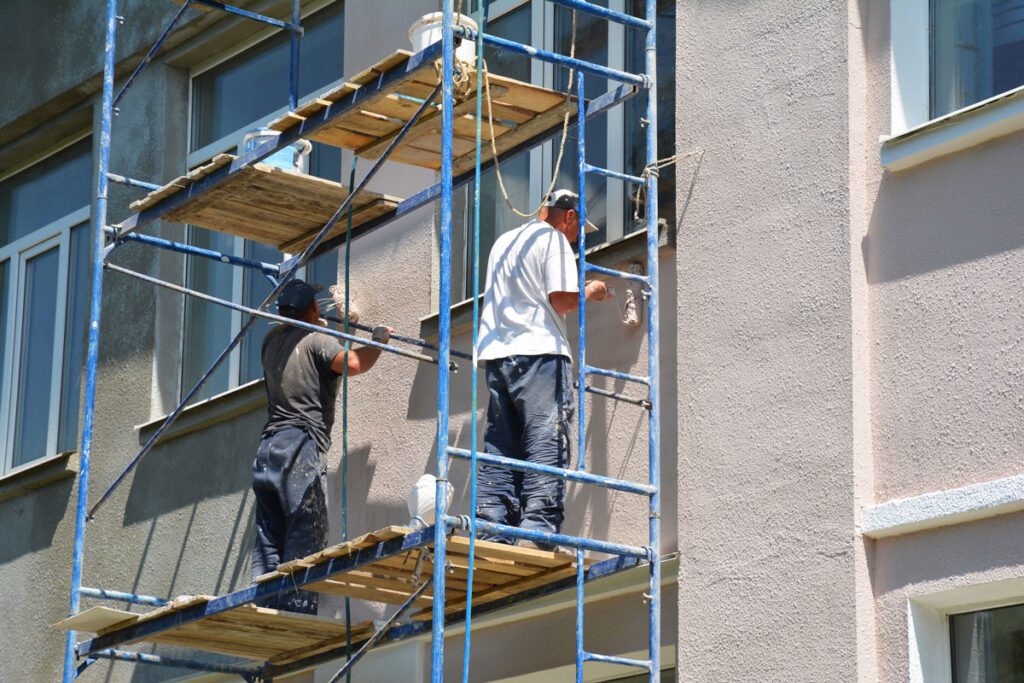The thrill of embarking on an exterior renovation project is undeniable. It’s the moment when your creative vision takes tangible form, transforming your home into a personalized oasis of style and comfort. Of course, like any bold endeavor, it’s not without its risks.
In any home improvement project, safety isn’t a mere footnote; it’s the headline, and neglecting it could turn your dream project into an unforeseen catastrophe. But don’t let this scare you off. There are tools and techniques specifically designed to ensure that your journey to home transformation is as safe as it is exciting.
Consider this post your trusty handbook dedicated to championing safety throughout your exterior renovation journey. We’ll explore practical advice and tips to help you avoid potential injuries, ensuring your project goes off without a hitch. Read on.

1. Understand The Risks
As surprising as it may seem, the most threatening risks often lie in everyday tasks. Slips, trips, and falls make up most renovation-related injuries, and it’s not hard to understand why considering the working conditions.
According to the National Safety Council, falls are a top contender for accidental injuries across the United States. These incidents are far from minor, often leading to substantial discomfort and long-term disability. In extreme situations, such falls can pose life-threatening risks.
Now, imagine this scenario. You’re perched on a ladder, tools in one hand, heavy materials in the other. With just one wrong step or a blink of distraction, things could go south quickly. It may sound grim, but solutions are available.
For instance, a solid, reliable platform to work on is one of the best defenses against these risks. A solution like residential scaffolding can be your trusted ally, offering stability and easy access to difficult areas; the benefits of residential scaffolding can be a game-changer in terms of safety during exterior renovations, especially since a sturdy scaffold minimizes the risk of falls, enabling you to focus more on your work and less on balancing yourself.
2. Gear Up For Safety
When preparing for a home renovation project, protective gear is not something you can afford to overlook – it’s a must-have. Think about items like helmets, gloves, safety glasses, and boots. These reliable tools can help shield you from possible injuries and keep you safe while you work.
But remember, not all safety gear is cut from the same cloth. As such, invest in high-quality products that fit well and meet safety standards.
3. Plan Your Moves

Venturing into a renovation project without a solid plan is like exploring a dense forest without a map.
Besides helping you complete your project more efficiently, doing so can help prevent injuries.
By planning ahead, you can have a better overview of the project’s scope and potential hazards that might crop up.
Here are a few tips to help you plan your moves safely:
- Identify Potential Hazards: Before you start working, take a look at your workspace and identify any potential hazards. This could include exposed wires, sharp edges, or uneven surfaces.
- Use Proper Lifting Techniques: If your project involves lifting heavy objects, ensure you use proper lifting techniques to prevent back injuries. For instance, bend at the knees, keep your back straight, and lift with your legs, not your back.
- Take Breaks: Working for long periods without taking breaks can increase your risk of injury. So, don’t forget to take regular breaks between tasks to stretch, rest, and hydrate.
By planning your moves with safety in mind, you can reduce your risk of injury and maximize results.
4. Use The Right Tools
Using the wrong tools for a job is like trying to paint a room with a toothbrush. Sure, you could do it, but it would take forever, and the result would likely be less than satisfactory.
The same logic applies to renovations.
Each task demands a specific tool to make the job safer and more efficient. That said, ensure you’re using the right tools for the job and they’re in good condition. It’s worth noting that damaged tools can compromise the quality of your work and pose a significant safety risk.
Also, remember to keep your workspace clean and organized, especially since loose tools and clutter may lead to unnecessary accidents.
5. Embrace Modern Solutions
Today’s cutting-edge solutions offer more than ease and efficiency; they’re crucial for enhancing safety on the job site. Consider, for example, power tools with advanced safety features. From saws equipped with automatic brake systems to drills with anti-kickback features, these devices may help reduce risks while boosting productivity.
Moreover, technological advancements offer a wealth of resources for the safety-conscious renovator. For instance, wearable technology, such as smart helmets and vests, can monitor vital signs, alert you to heat stress, and even signal for help in an emergency.
6. Train Yourself
When planning exterior renovations, having some knowledge can go a long way in preventing injuries. Educating yourself doesn’t necessarily mean you need to enroll in a professional course (although that could be helpful), but it’s important to know what you’re doing. However, it’s more than just getting familiar with different tools. It involves understanding their correct usage, grasping safety protocols, and being aware of building codes and regulations.
Knowing how to handle emergencies and basic first-aid techniques can also prove invaluable during exterior renovations. It’s about cultivating a comprehensive knowledge base that can equip you to prevent accidents and respond if they do occur.
Conclusion
Exterior renovations can be a great way to improve your home’s curb appeal. However, it’s crucial to prioritize safety to avoid accidents and injuries. By following this handy guide, you can educate yourself on the best practices for exterior renovations and work on your project with confidence.


